Salt (sodium chloride) is not just a seasoning. It's an essential ingredient in cooking that not only enhances and balances flavors, but also plays a crucial role in various cooking techniques. Salt is used in every cuisine in the world. Understanding the different types of salt and how to use them can raise your culinary skills and transform your dishes from ordinary to extraordinary. From table salt to exotic sea salts, each variety has its unique characteristics. In this guide, we will discuss the various types of salt used in cooking, exploring their distinct flavors, textures and culinary applications.
All salt comes from the sea, whether extracted from sea water or mined from ancient sea water salt deposits in Pakistan. It's the location and extraction process gives each type of salt its unique texture, flavor and mineral characteristics. Let's explore some of the most common salts and how to use them.

Jump to:
Table Salt
Table salt is the most common type of salt found in kitchens. It has fine granules that dissolve quickly making it ideal for baking where exact measure, uniformity and consistency are important. The flavors of most baked goods, from cookies to sweet breads, are enhanced by this salt. Table salt is usually iodized, to prevent iodine deficiency, and often contains additives like anti-caking agents, which prevent clumping. While table salt is suitable for general cooking and seasoning, its fine texture makes it easy to over season dishes. Table salt is also highly refined which removes its natural minerals and affects its flavor when used as a seasoning.
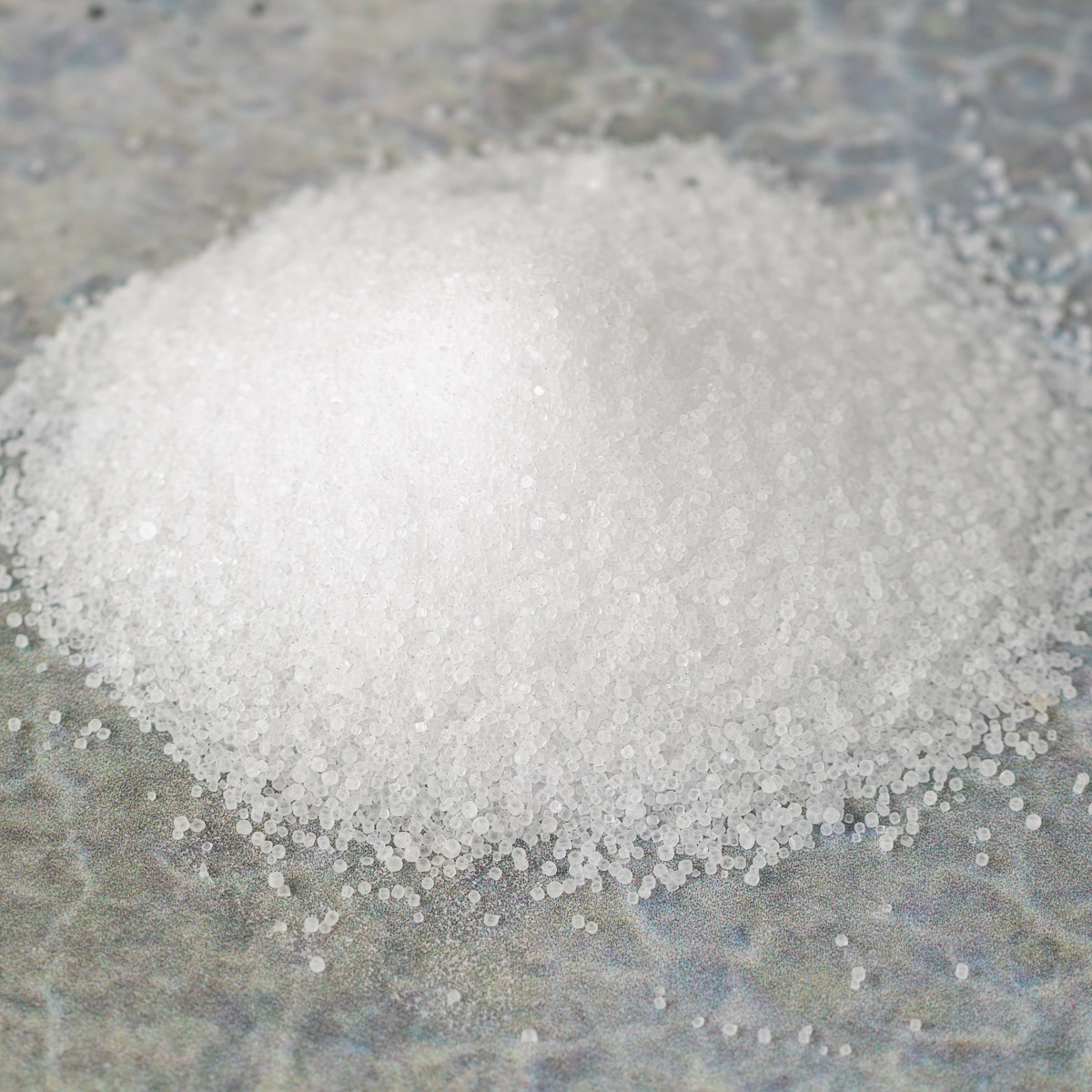
Kosher Salt
If you only have one salt in your kitchen, this is the one to have. Kosher salt has a larger crystal size compared to table salt, making it easier to pinch and sprinkle. That means better control over seasoning and less likelihood of over seasoning. It is called "kosher" because it's commonly used in the koshering process of meat. The majority of kosher salts on the market are still certified by a rabbi. Kosher salt does not contain additives like iodine or anti-caking agents, making it a preferred choice for many chefs.
The coarse texture, clean flavor and ability to draw out moisture makes kosher salt ideal for seasoning meats and vegetables during cooking. It's also used in brining solutions and in boiling water for pasta. Kosher salt is also commonly used in barbecue brisket where a crusty outer layer makes a good foundation for great bark.
Kosher salt is versatile, suitable for both cooking and finishing. Although its irregular shape means you might need to adjust quantities when substituting it for table salt. This salt can generally be substituted in recipes 2:1 for table salt, but not all kosher salt is created equal. Grain size varies significantly between brands. For example, the grain size found in the two major brands, Morton and Diamond, are vastly different. Find a brand that you like and stick to it. Also, if the amount of salt is critical in the recipe you are making, like pizza dough, measure it by weight, not by volume. Small digital scales accurate to .05 grams are inexpensive and easy to find online.
When cooking certain vegetables with high water content, like zucchini, yellow squash and eggplant, place them in a colander and salt them 30 - 60 minutes before cooking. This will allow them to release a lot of their liquid resulting in crisper vegetables.

Fine Sea Salt
Fine sea salt is harvested from evaporated seawater and retains trace minerals giving it a more complex flavor profile compared to table salt or kosher salt. This salt is versatile and can be used in a wide range of dishes, from soups and sauces to baked goods and popcorn. Its delicate texture and fine crystals make it dissolve easily, making it suitable for everyday cooking. Use fine sea salt in any recipe that calls for sea salt or table salt.
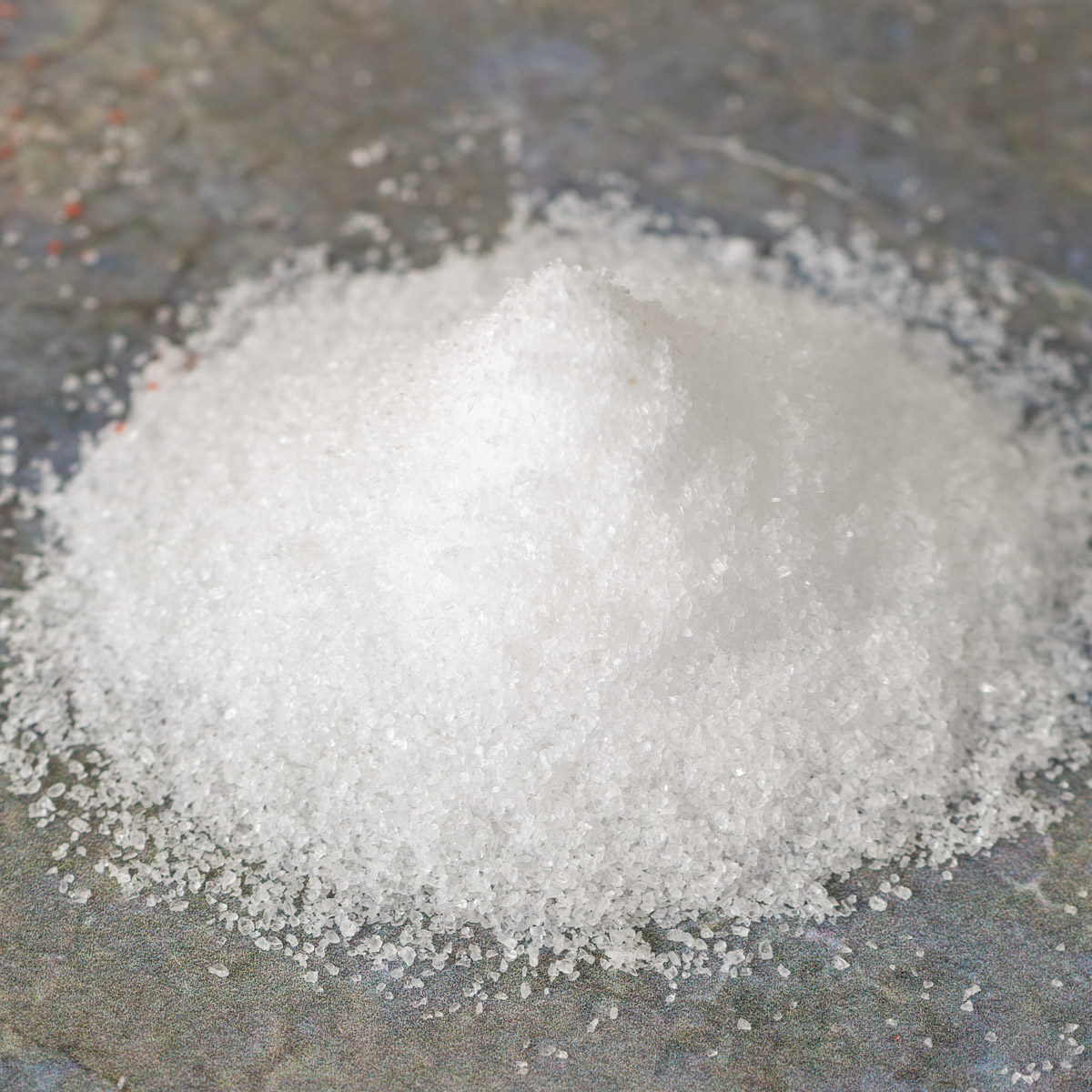
Flake Sea Salt
Flake sea salt is harvested through a process of evaporating seawater in shallow pools, forming delicate flakes on the surface. The light, flaky crystals are known for their crisp texture and subtle briny flavor. Flake sea salt should not be used in cooking because the size of the flakes makes it hard to measure. Also, its crunch and flavor are lost when dissolved. Many chefs prefer to finish dishes that need a delicate crunch and a bit of saltiness with flake sea salt, enhancing both visual appeal and taste. Sprinkle flake sea salt over salads, grilled meats or chocolates for a gourmet touch. As with all finishing salts, sprinkle from a height of 10-12" for even distribution.
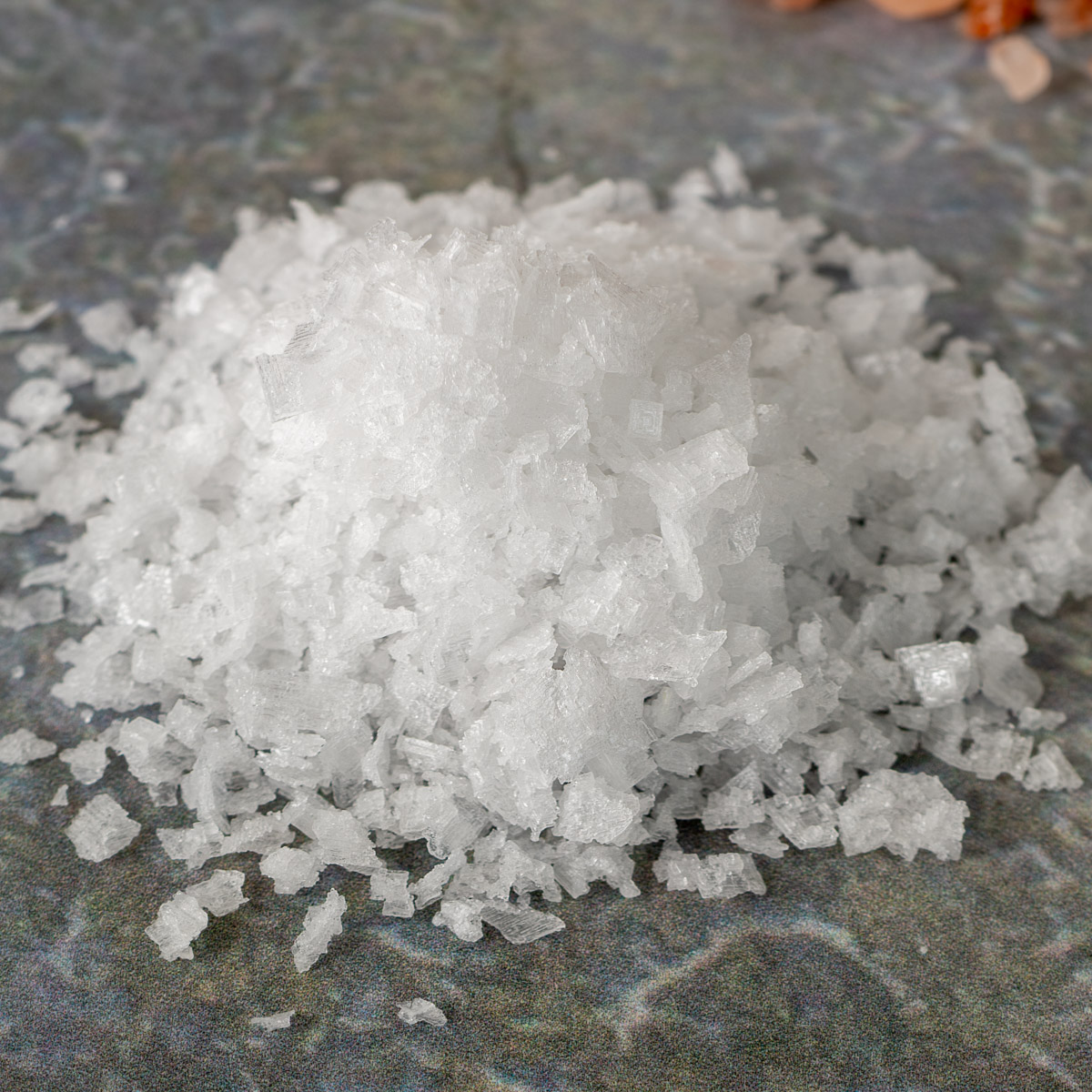
French Grey Sea Salt
French grey sea salt, also known as Celtic sea salt or sel gris, is harvested from clay-lined salt ponds in the coastal regions of France. It has a moist, coarse texture and a slightly grayish hue due to its mineral content. This salt is known for its briny flavor with hints of minerals and is often used in cooking and finishing dishes adding both flavor and a crunchy texture. It's also great on salted caramel.
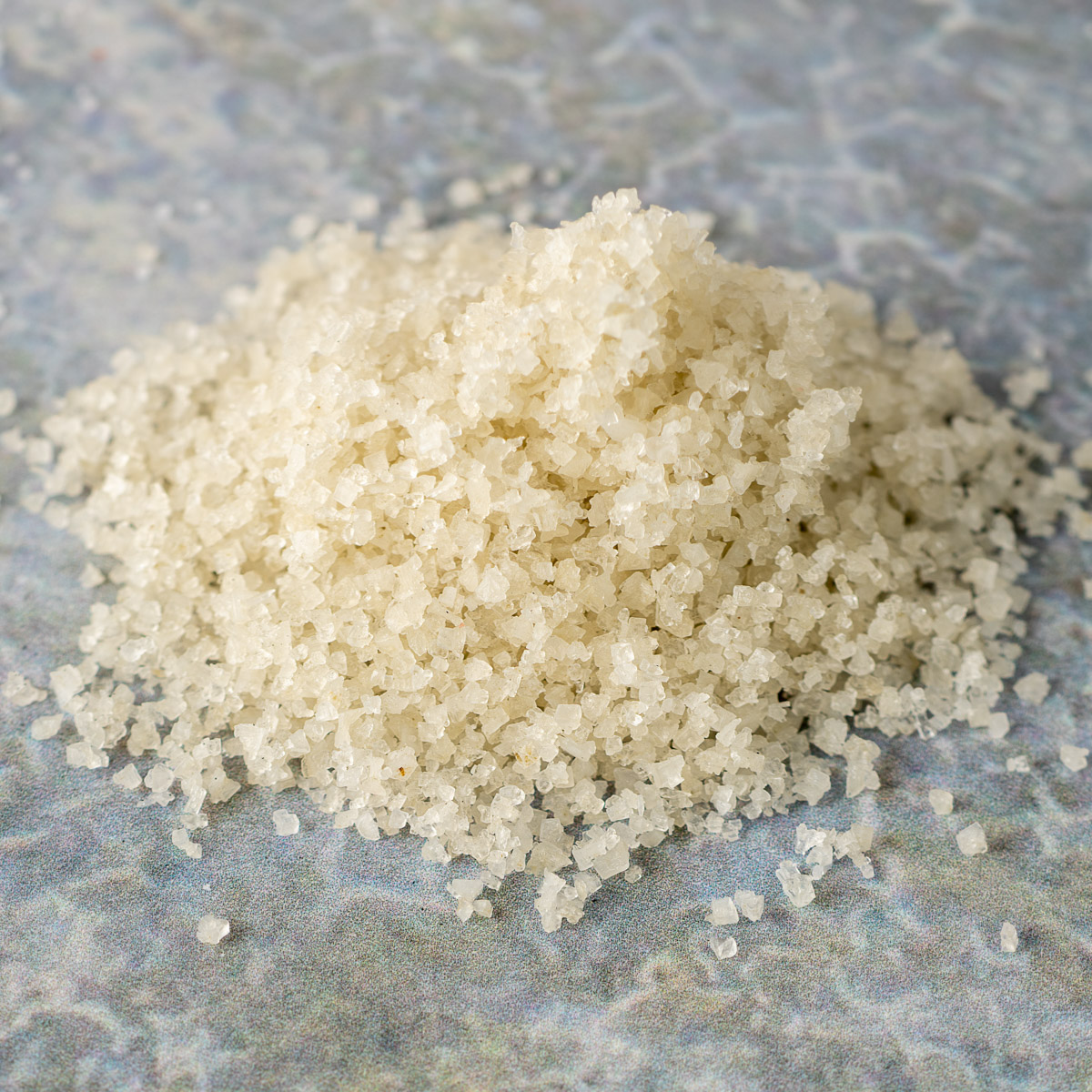
Black Sea Salt
Black sea salt, also known as black lava salt or Hawaiian black salt, is a type of sea salt infused with activated charcoal, giving it a striking black color. It has a slightly sulfurous aroma and a distinct earthy flavor. Black sea salt is often used as a finishing salt, adding visual contrast and a hint of smokiness to dishes like burrata cheese, salads, seafood and grilled vegetables.

Red Sea Salt
Red sea salt, also known as Alaea salt, is a traditional Hawaiian salt that gets its color from volcanic clay in the salt beds where it's harvested. The clay adds iron oxide to the salt, giving it a mild, earthy flavor and a slightly coarse texture. Red sea salt is often used in traditional Hawaiian dishes, like poke and kalua pig. It is also used as a finishing salt, to add visual appeal, sprinkled over dishes like roasted root vegetables, grilled meats or chocolate desserts.
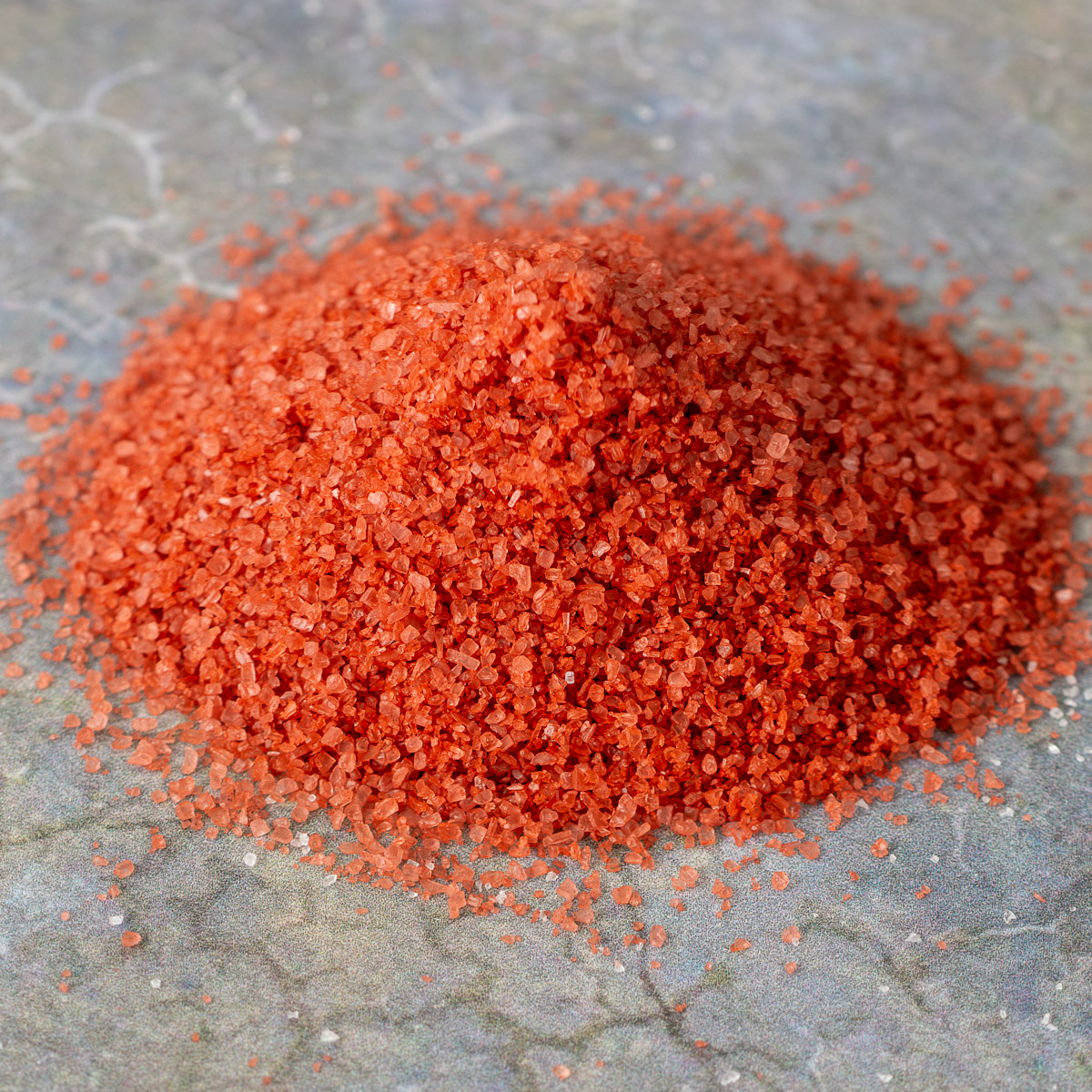
Himalayan Pink Salt
Himalayan pink salt is mined from ancient sea salt deposits and is known for its pink color, which comes from trace minerals, like iron oxide. This salt has a subtle flavor with a hint of sweetness and is often used as a finishing salt. Its unique color and subtle flavor make it a popular choice for both savory and sweet dishes. Himalayan salt is also commonly found in salt grinders for table use.
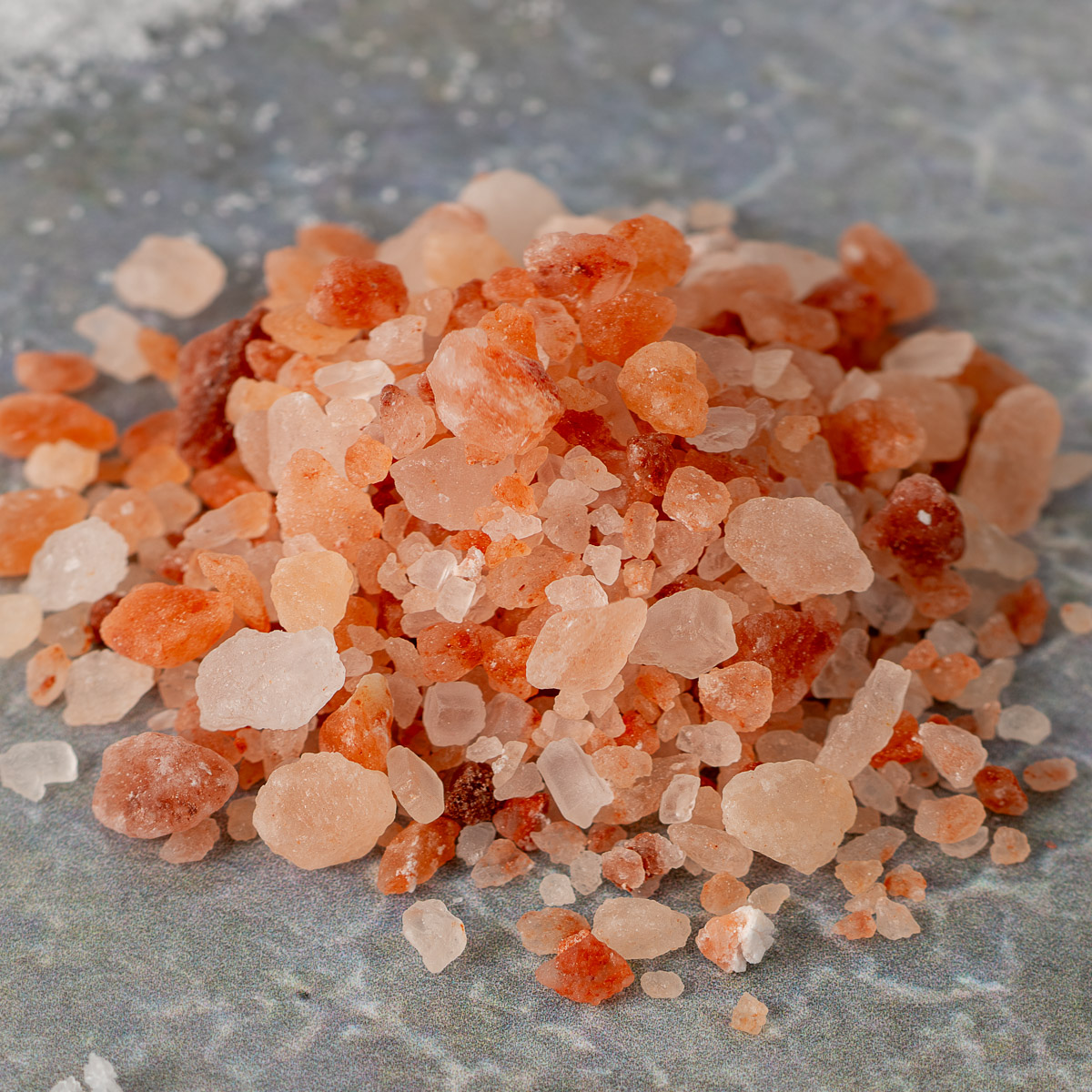
Summary
The world of salt offers a wide range of flavors, textures, and colors to enhance your cooking. From common table salt to exotic varieties, each has its unique characteristics and culinary applications. By understanding the properties of each, you can elevate your culinary creations and master the art of seasoning and visual presentation.
While the type of salt can make a difference in cooking, the shape and size of the salt grains are also important. They affect how the salt interacts with the food and how it dissolves. Experiment with these different salts to discover which ones best suit your cooking style and palate.
It is always better to under salt than over salt. The key to using salt effectively is to taste as you go and adjust accordingly.



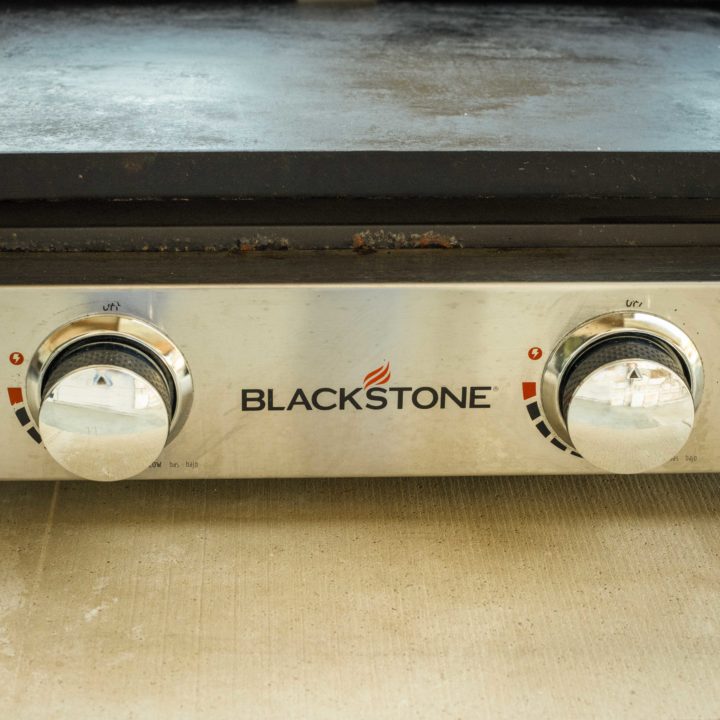

Leave a Reply